The indie game The Artist is Present, by Pippin Barr, is particularly interesting for me because recently I’ve decided to study art and artistic avant-gardes: a considerable part of the theories I currently study were thoughts from the reflection upon the work of art; so I took this chance to understand the game a bit beyond the “expected art”.
In this indie game, the player takes the role of an unknown anonymous random-phenotype museum visitor, and the sole objective is entering the museum and taking part in the artist performance The Artist is Present (The Artist is Present, Marina Abramović, 2010). This performance actually happened in 2010, and it consist of a spectator sitting in front of Abramovic, the artist, and engaging in silent exchange with her.
Currently, Marina Abramović is one of the The Top 14 Living Artists of 2014.
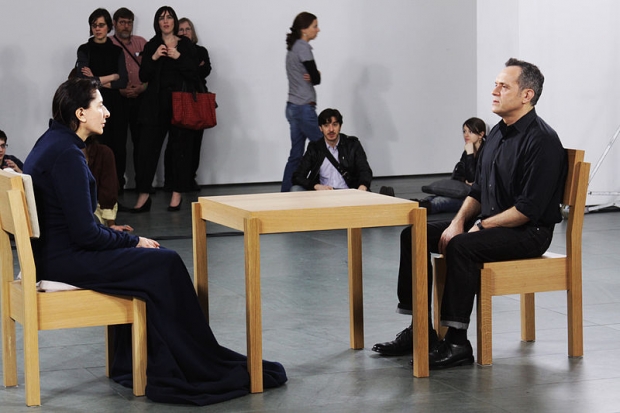
The Artist is Present is fairly different from what you expect in a game. Initially, it works in accordance to the real world, and the world game is a loyal representation of our reality.
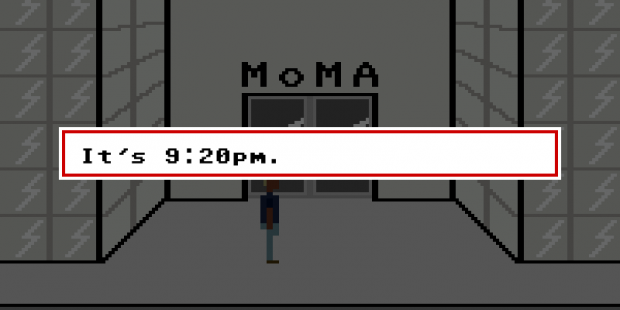
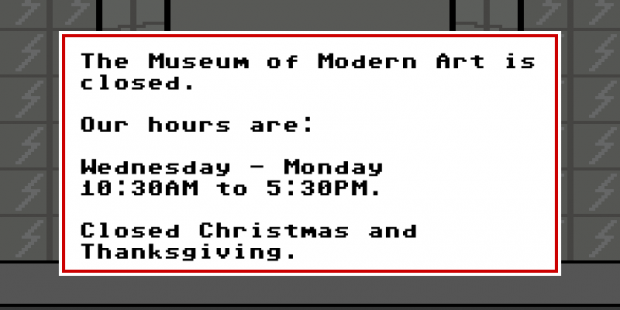
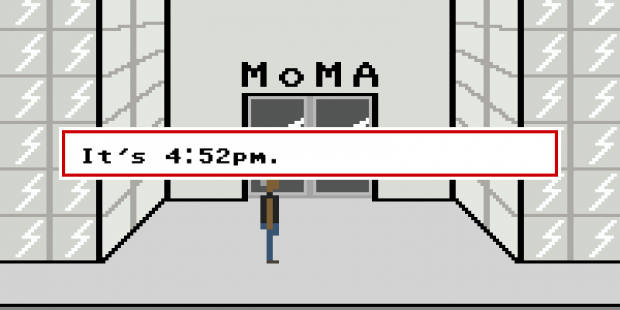
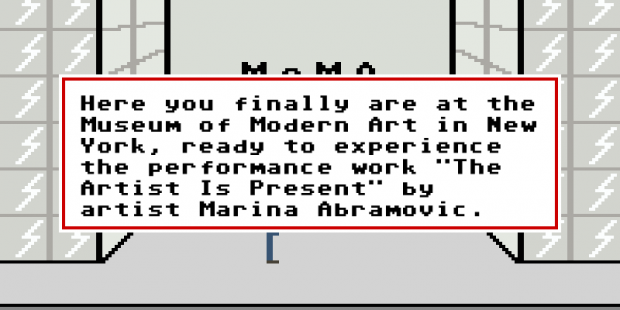
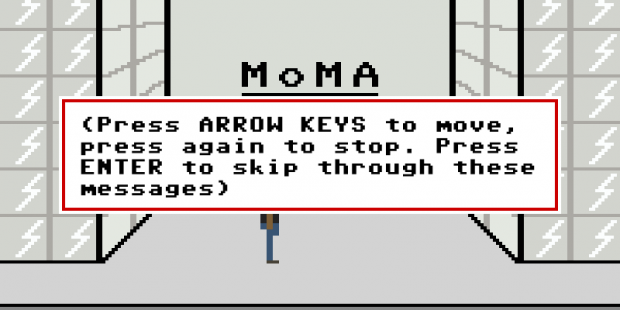

The game is available to be played in a brwoser, and as such it works as an online game – other players can enter and take part in the same environment as you. However, the parallel world presented by The Artist is Present can be off-putting sometimes: firstly, we should respect the museum open-close time – meaning you can’t play any time you want. I tended to forget that, as I am in a different time zone, so I often found it closed; secondly, you can’t just enter, the museum, you have to buy the ticket (with game money), and politely give it to the security guard.
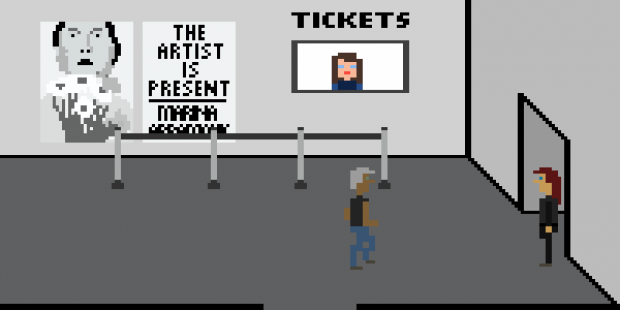
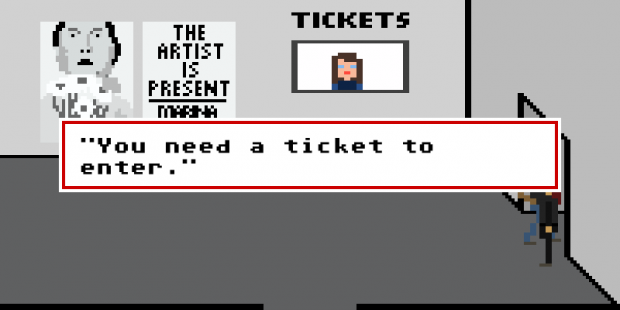
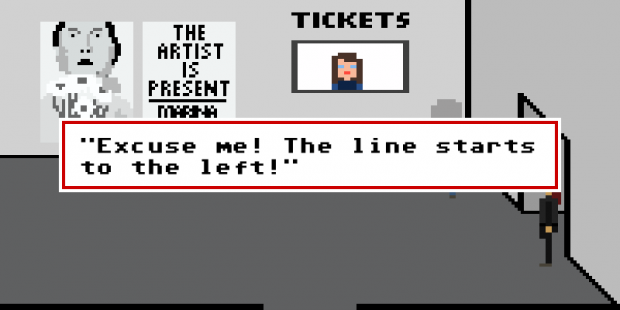
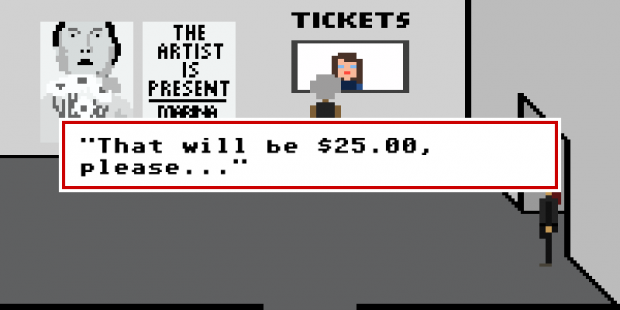
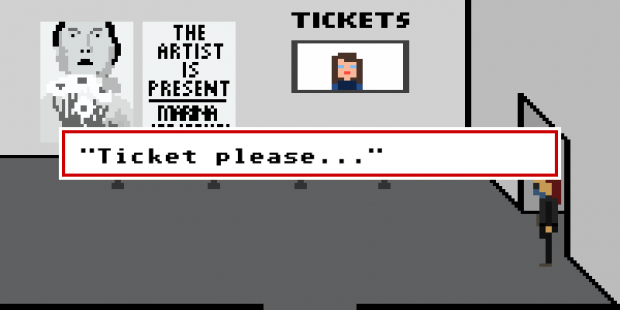
Inside the museum there are some famous paintings, and it’s possible to read their information. Just like in a real museum.

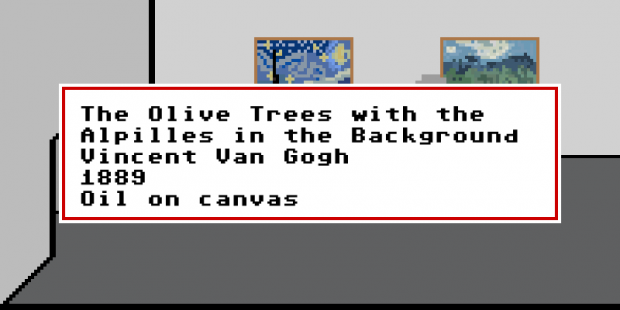
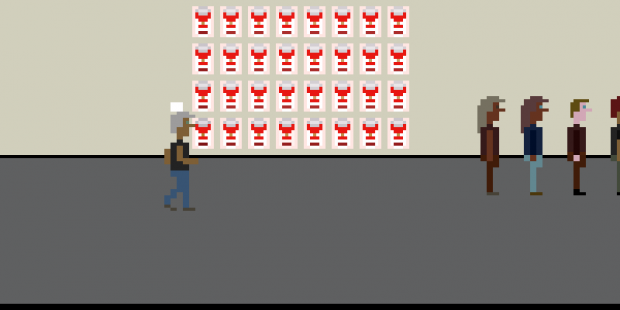

And, for the main attraction – which consists of sitting in front of Abramović -, there is a long line. The player must stay in line to get to admire her. I’m not sure long the player is supposed to stay there, because although I’ve waited a couple of hours, I couldn’t get in.
And that’s what the game is about. I’m certain some would say that “this game is not actually a game” or “this piece lacks ludic elements”. I say that, although there is no common challenge that you expect from an adventure game, for instance, it is very clear that The Artist is Present attributes the “gaming” element to the reality itself, i.e. you have to play by the rules, the exact rules established by your own society.
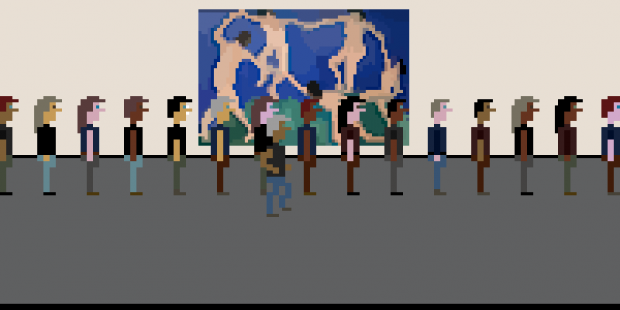
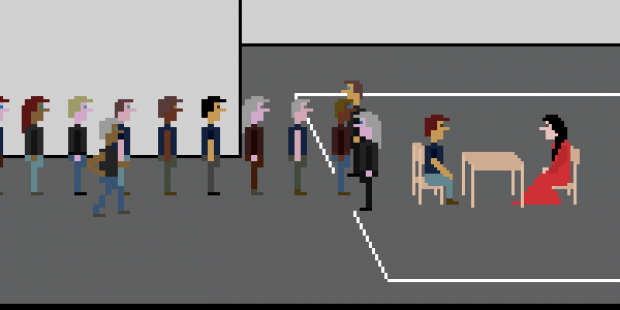
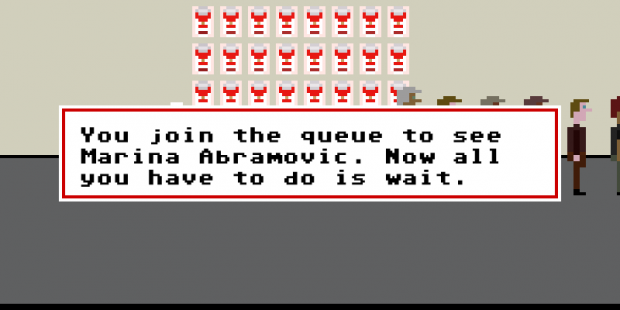
I personally believe that the game poses a real challenge. It tells the player, basically, “I dare you to take part in this”. And when the player accepts this challenge, they automatically engage in a ludic system, where something (generally winning or losing) is the focus. In this case, winning is sitting in front of Abramović. In the words of Pippin Barr, the developer, this is a game in which you must obey rules and conventions – waiting for opening hours, buying the ticket, waiting in line. He, himself had to wait for 5 hours in line to participate in the performance.
The Artist is Present presents us with a precious mechanics to hell us think about game rules and game worlds and how those influence the players’actions.
Pippin Barr’s official site:
http://www.pippinbarr.com/games/theartistispresent/TheArtistIsPresent.html
Indie Games Dev Blog:
http://indiegames.com/2011/09/browser_game_pick_the_artist_i.html
Interview with Pippin Barr:
Marina Abramović page at Artsy: https://www.artsy.net/artist/marina-abramovic-1

 Simple, yet polished: COLOR is a great puzzle
Simple, yet polished: COLOR is a great puzzle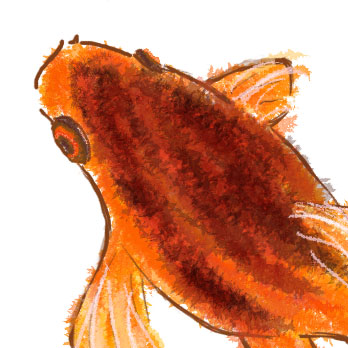 Becoming myself again via video games
Becoming myself again via video games SuperSugoiSoftStudios DevDiary #01: First Steps
SuperSugoiSoftStudios DevDiary #01: First Steps Meatballphobia
Meatballphobia Dec 18th, Ghosts (Enid’s diary entry 42)
Dec 18th, Ghosts (Enid’s diary entry 42) SuperSugoiSoftStudios DevDiary #02: Building the Storyline
SuperSugoiSoftStudios DevDiary #02: Building the Storyline Dec 22nd, Haruyuki
Dec 22nd, Haruyuki IABO
IABO